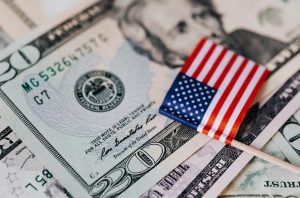Michael Bloomberg, the co-founder of the eponymous business news and information giant, recently penned an opinion piece in the Washington Post proclaiming that federal employees were wasting taxpayers’ money by not returning to the office. Bloomberg claims that services suffer from remote work, and a ‘monopoly’ supplier like the government means that customers are unable to go to another supplier and thus must ‘put up with poor service.’
This opens up an excellent opportunity to talk about an industry that has truly been negatively impacted by remote work – commercial real estate – and how that may be part of the motivation to push employees back into the office.
A return to the office?
According to the Bureau of Labor Statistics, 34% of Americans still work from home an average of 5.9 hours a day. Although this is down from a high of 42% in 2020, it is still higher than the share of workers in 2018 and 2019 – both 24%.
Despite many companies stating that working from home is a ‘permanent shift,’ some companies are still trying to entice their employees to go back to the office. Even Zoom, the company that helped so many others take their operations remote, is asking employees to return to the office part-time. Other tech companies with the technology to remain remote are also pushing for more time in the office.
It is clear that plenty of employees are not happy about being forced back into the office, with some even walking out at Amazon. Yet, these companies are pushing ahead undeterred, citing new research on some benefits of in-person work like more feedback for junior employees and more collaborative work between departments for better innovation. But these explanations may not tell the whole story. As a Stanford economist told The New York Times, “…the tech industry’s move back to the office was no surprise given the amount these companies spend on office real estate.”
The commercial real estate business
Renters of commercial spaces are generally locked into leases for many years, which has helped guarantee stability in the market. But as more office desks remain empty, some tenants are choosing to let their leases expire, which are then left empty as owners struggle to find new renters. In San Francisco, new office lease rates have dropped 30.8% since 2019 and are expected to worsen over the next seven years.
The commercial real estate business had been growing for decades and is currently estimated to be valued at $20 trillion. Smaller lenders were crucial drivers of this growth, as 67% of outstanding commercial real estate loans are held by small and mid-sized banks, but many are slowing lending and looking to take fewer risks after the collapse of Silicon Valley Bank.
Earlier this year Bloomberg’s namesake news outlet published a podcast on the commercial real estate market and how declining income from office space was something to be anxious about for this very reason. With lower occupancy rates, companies choosing to reduce office space, and rising interest rates, the commercial real estate business may not be able to continue to grow in the same way. Commercial loans may no longer be a sure bet for investors and could negatively impact other parts of the economy.
Indeed, with a company like WeWork that attempted to revolutionize the way people work announcing last week that it has ‘substantial doubt’ that it will be able to remain in business could have big implications for the industry. WeWork had 18 million square feet of office space in the United States and Canada at the end of 2022 which could mean a lot more empty office space going unrented.
Flight to quality
Researchers from the McKinsey Global Institute found that rents and demand for Class A (high-quality) office space grew more quickly than Class B spaces between 2020 and 2022. The researchers listed a number of reasons for this trend including as a way to encourage office attendance. Survey respondents noted that they would be willing to trade 20% of their salary in order to not go to an office every day, but that a more pleasant space to work was one of the top reasons to sometimes go in.
Megan McArdle from the Washington Post argues that if companies want workers to return to the office, they should give them an office to come back to. Not open floor plans, nor ‘dispiriting’ cubicles, or tight cramped spaces but rather an actual room with a door. What businesses choose to do is worth continuing to watch as reduced rental rates may allow creative employers to reimagine a return to the office.







